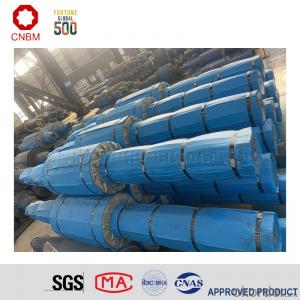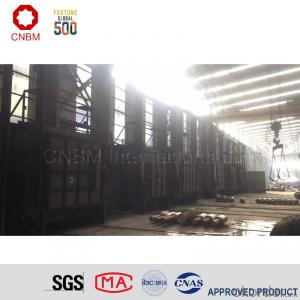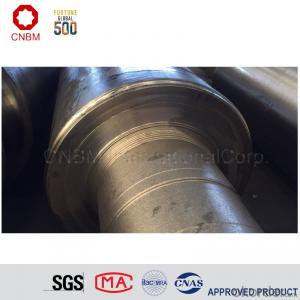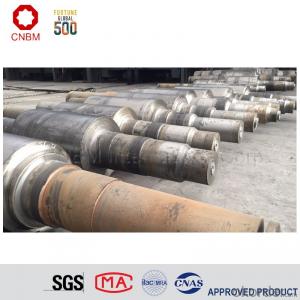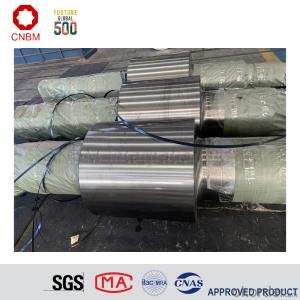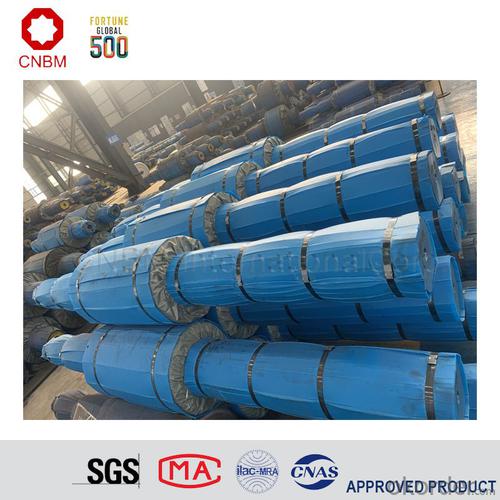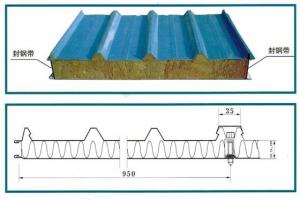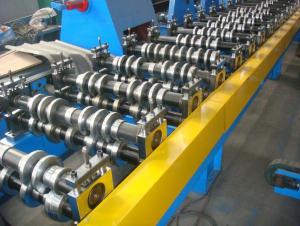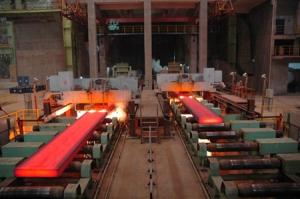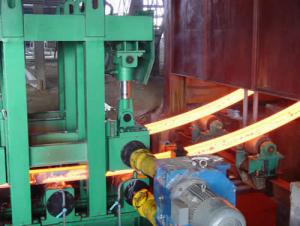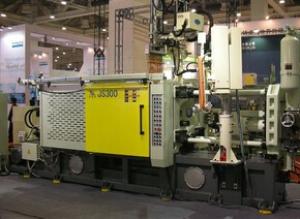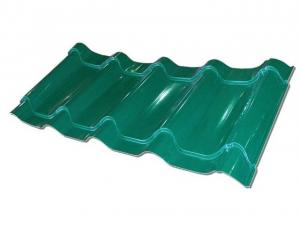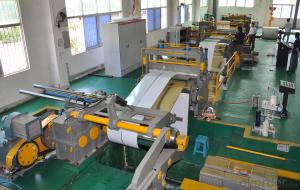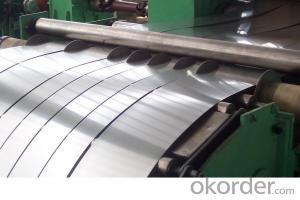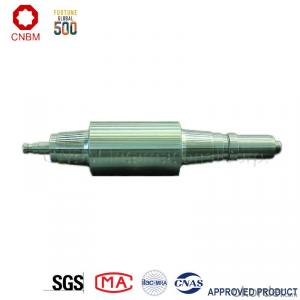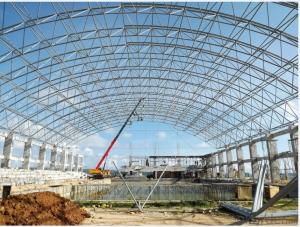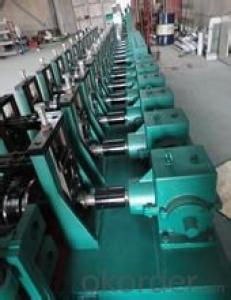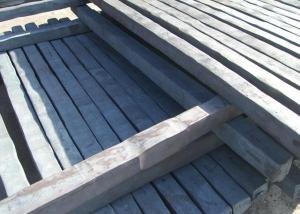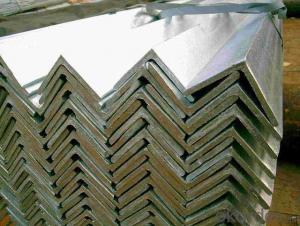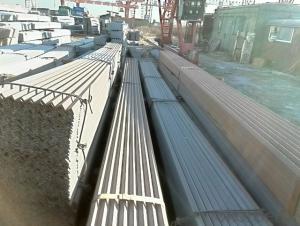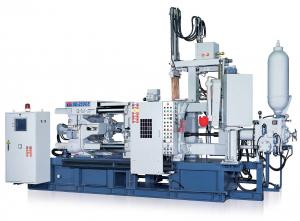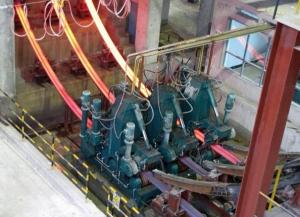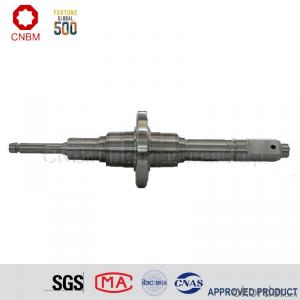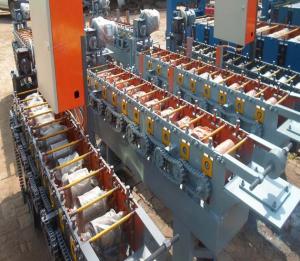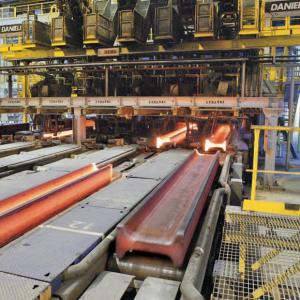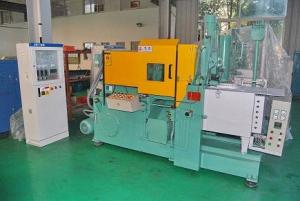Half-Speed Steel Roll With High Quality and Low Price
- Loading Port:
- Tianjin
- Payment Terms:
- TT OR LC
- Min Order Qty:
- 2 m.t.
- Supply Capability:
- 41000 m.t./month
OKorder Service Pledge
OKorder Financial Service
You Might Also Like
Specification
Company Profile
CNBM International Corporation (CNBM International) is the most important trading platform of CNBM Group Corporation, a state-owned company under the direct supervision of State-owned Assets Supervision and Administration Commission of the State Council.
CNBM Group is integrated with four business segments: Manufacture, R&D,Sets of equipment and Logistics trading.Mill rolls are our main products.
CNBM International is highly recognized by its business partners and clients all over the world and has established good business relationship with the customers in over 120 countries and regions all over the world.
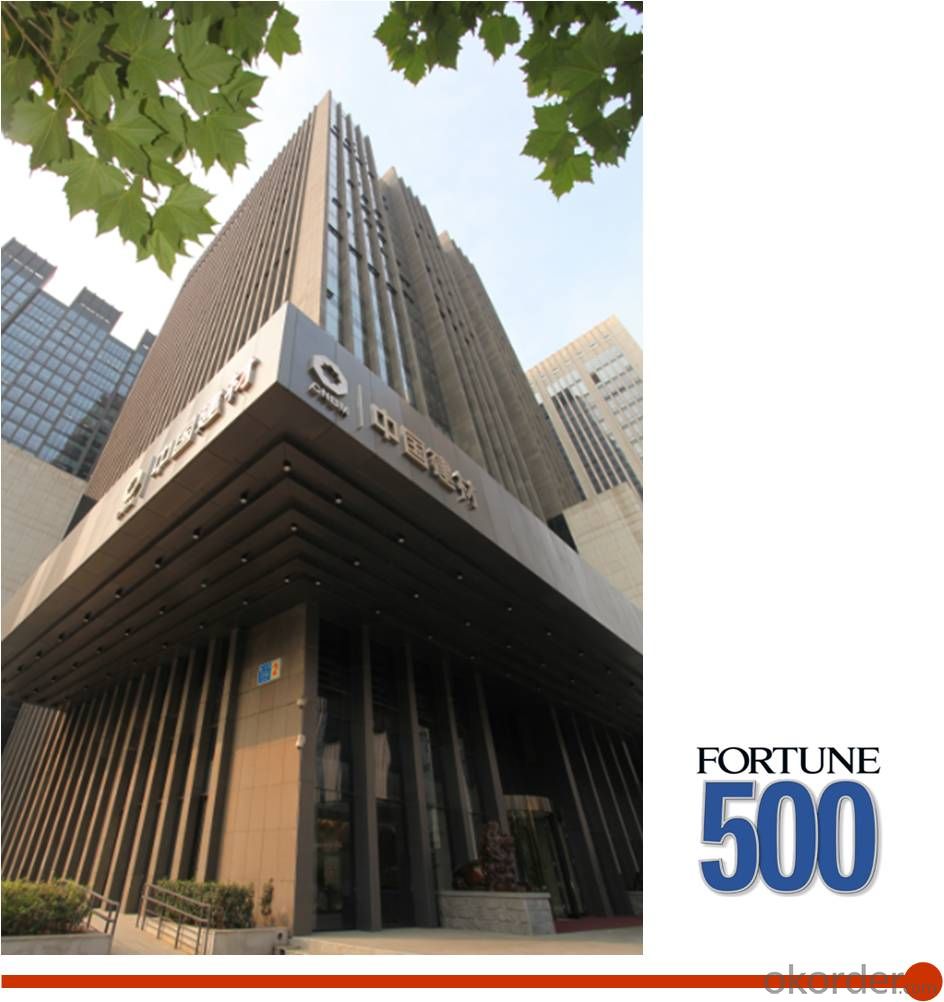
The product introduction of mill roll
Equipped with advanced technological facilities on melting, casting, forging, heat treating and mechanical machining, our factory has formed 9 professional complete roll manufacturing lines of cast steel, cast iron and forged steel rolls such as strip mill rolls, heavy section mill rolls, wire & bar rolls, special shaped rolls and small-sized cold rolls and specialized production lines of bloom and slab CCM, coke oven equipments and wind power products. Annual production capacity of mill rolls is 500,000 tons, metallurgical equipment is 80,000 tons.

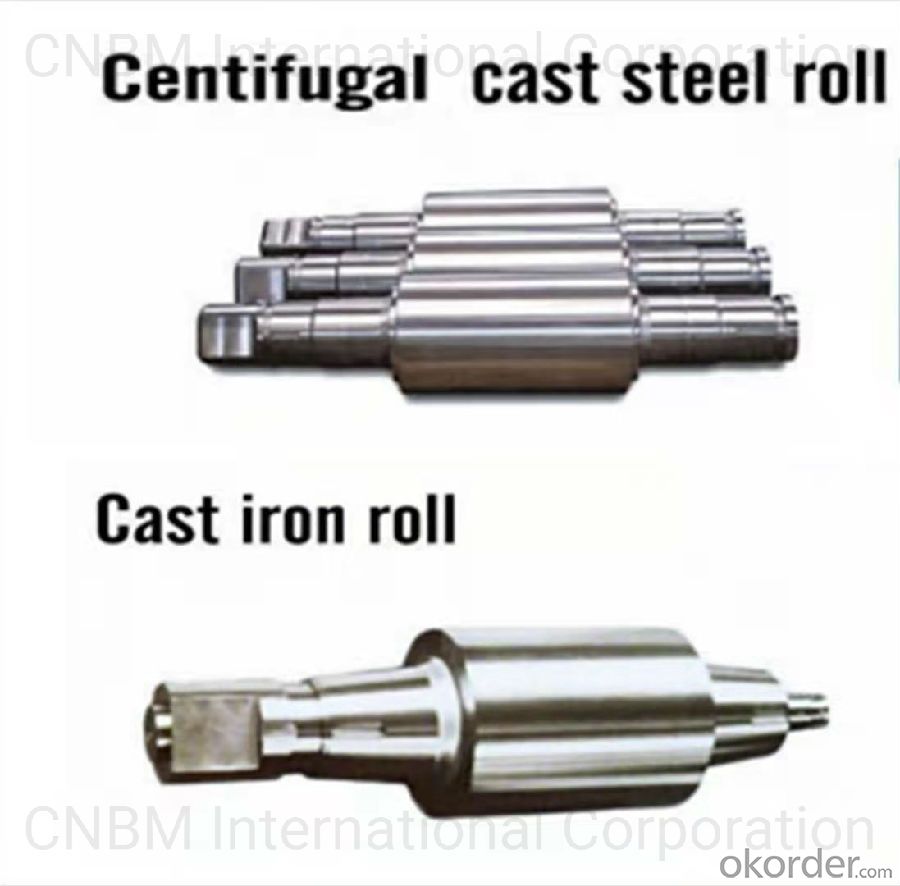
Workshop
Workshop is the core of our company and undertakes all of scientific research work. The company specially produces and supplies all kinds of roll used for hot strip mill, cold strip mill, plate & heavy plate mill, large-sized section mill, universal mill etc.
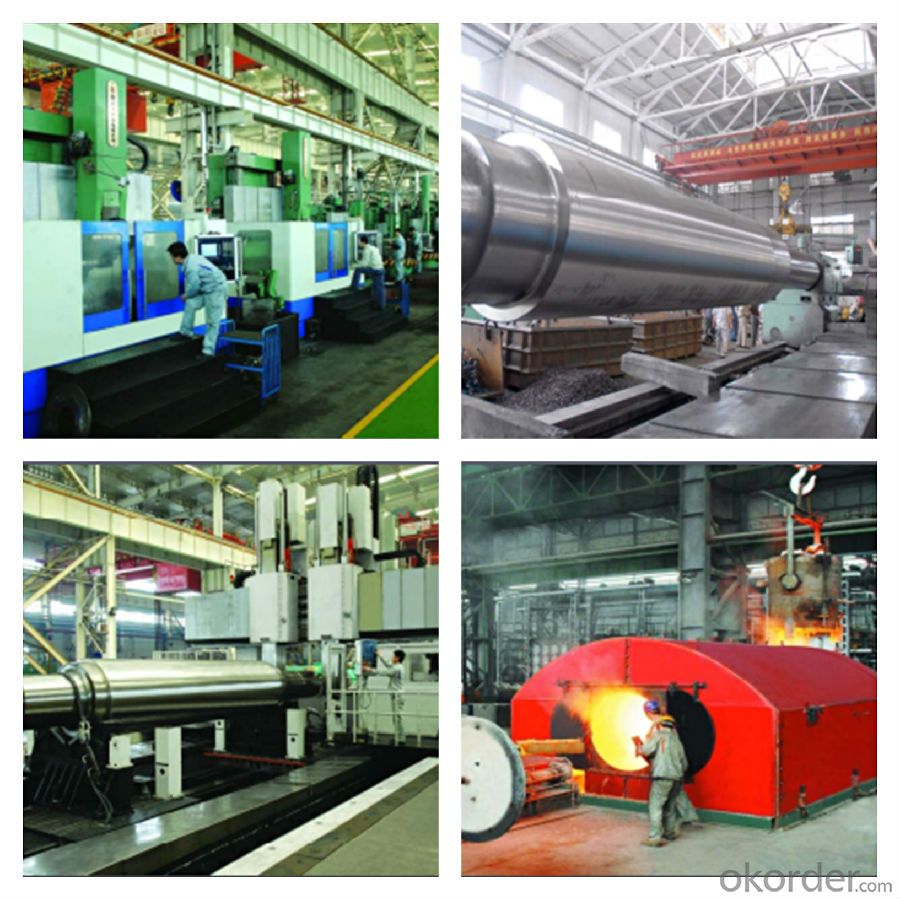
Products & Specification
| Mill | Application | Material | Product Specification | ||
| Hot Strip Mill | Large-sized vertical roll | Special alloy cast roll, Adamite | All Sizes | ||
| Small-sized vertical roll | Adamite, HiCr iron | ||||
| Roughing work roll | Special alloy cast steel, Adamite, HiCr steel, Semi-HSS, HiCr iron | ||||
| Finish rolling | Early stand work roll | HiCr iron, HSS | |||
| Later stand work roll | ICDP, HSS | ||||
| Finishing back-up roll | Duplex cast steel | D≤¢2000,W≤80t | |||
| Alloy forged steel | D≤¢2000,W≤75t | ||||
| Temper rolling | Work roll | HiCr iron | All Sizes | ||
| Alloy forged steel | |||||
| Back-up roll | ICDP | ||||
| Duplex cast steel | D≤¢2000, W≤80t | ||||
| Alloy forged steel | D≤¢2000, W≤75t | ||||
| Mill | Application | Material | Product specification |
Cold strip mill & Single stand cold mill | Work roll | Alloy forged steel | All Sizes |
| Intermediate roll | Alloy forged steel | ||
| Temper roll | Alloy forged steel | ||
| Back-up roll | Duplex cast steel | D≤¢2000,W≤80t | |
| Alloy forged steel | D≤¢2000,W≤75t | ||
Largesized universal structural mill | Break-down roll | Special alloy cast steel, alloy nodular iron | All Sizes |
| Horizontal collar | High carbon adamite (duplex) | ||
| Vertical collar | High carbon adamite, HiCr iron | ||
| Edger roll Edger roll | High carbon adamite | ||
| Shaft | Alloy forged steel |
| Mill | Application | Marterial | Product Specification | |
| CSP | Vertical Roll | Adamite, Special alloy cast steel, HiCr iron | All Sizes | |
| Roughing work roll | Semi-HSS, HiCr Steel | |||
| Finish rolling | Early stand | HiCr iron, HSS | ||
| Later stand | ICDP, HSS | |||
| Roughing & Finishing back-up roll | Duplex cast steel | D≤¢2000,W≤80t | ||
| Alloy forged steel | D≤¢2000,W≤75t | |||
| Steckel Mill | Vertical roll | Adamite, Special alloy cast steel | All Sizes | |
| Roughing work roll | ICDP, HiCr iron | |||
| Finishing work roll | HiCr iron, ICDP | |||
| Back-up roll | Duplex cast steel | D≤¢2000,W≤80t | ||
| Alloy forged steel | D≤¢2000,W≤75t | |||
| Plate & Heavy plate mill | Rough rolling | 2-hi work roll | Special alloy cast steel, Tool steel | All Sizes |
| 4-hi work roll | HiCr iron, ICDP | |||
| Finishing work roll | HiCr iron, ICDP | |||
| Single stand work roll | HiCr iron, ICDP | |||
| Back-up roll | Duplex cast steel | D≤¢2000,W≤80t | ||
| Alloy forged steel | D≤¢2000,W≤75t | |||
Quality Control
The company has the most advanced experimental and testing equipments in global mill roll industry, including direct-reading spectrometer, spectrum analyzer , X-ray fluorescence analyzer, scanning electronic microscope, energy disperse spectroscopy, X-ray diffractometer, image analyzer, high/low temperature metallographic microscope, X-ray stress meter, brittleness temperature tester, thermal analogue machine, dilatometer, macro and micro hardness tester, OMNISCAM-1X automatic flaw detection, USN60 ultrasonic flaw detector, magnetic powder and non-destructive flaw detection etc,. The advanced inspection equipments and experimental methods provide guarantee for quality control and experiment on material, usability test and performance.
The factories of CNBM invested 2.3 billion RMB for large-scale
CNBM international Corporation has completed equipment and technology upgrade transformation, which was concentrated on three projects, production line of centrifugal casting rolls for hot strip and plate mill, forged roll for cold/hot strip mill, national class technology center and roll material lab. Through upgrade transformation, the following targets have been achideved:
(1)It becomes the world's biggest specialized mill roll maker with the largest production scale, the most complete specifications of products and the most extensive coverage of various rolls used on rolling mill.
(2) The technology of equipments has reached international leading level.
(3) "Mechanization, automation, intellectualization, digitization" of equipments obviously improve the quality control ability.
(4) New types of research instruments improve the R&D capacity of products.
Customers Visit
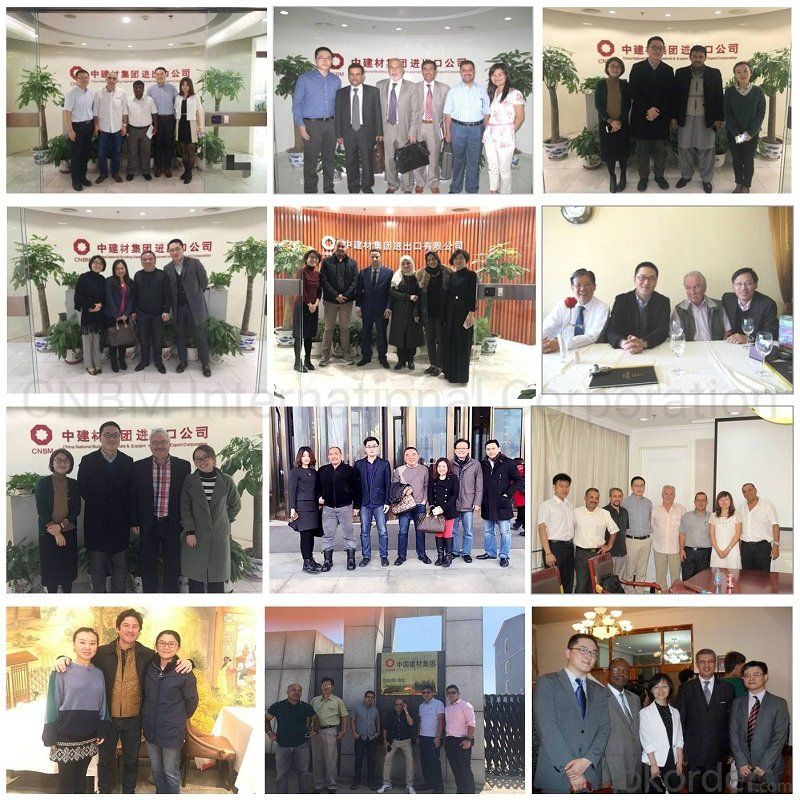
FAQ
Q:Are you a trading company or manufacturer?
A:CNBM is a large-scale central governmental industrial group with its own manufacturing sector, research and development sector, trading sector and logistics sector.
Q:I have some special requirement about specifications.
A:We have a well-rounded product range, which endows us with the capability of applying many special specifications. Please feel free to contact us with yours.
Q:Do you accept OEM service?
A:Yes, we do.
Q:What is your delivery time?
A:It depends on the size/complexity of your order and our own production schedule. Usually we provide a faster delivery than the industry's average.
Q:What is the payment term?
A:Our payment terms are negotiable.
Q:Can I have my own logo on the product?
A:Sure, we can apply your own logo on the products according to your requirement.
- Q: Can metal casting machinery be used for investment casting of glass?
- No, metal casting machinery cannot be used for investment casting of glass. While both metal casting and investment casting involve pouring molten material into a mold, they are designed for different materials and have different requirements. Metal casting machinery is specifically designed for melting and pouring metal alloys, which have different properties and melting temperatures compared to glass. Additionally, the molds used in metal casting are made of materials that can withstand the high temperatures of molten metal, such as sand or ceramic. In contrast, investment casting of glass requires specialized equipment and molds that can handle the unique properties and lower melting temperature of glass. Therefore, dedicated glass casting machinery and molds are necessary for investment casting of glass.
- Q: What are the different types of finishes applied to castings using metal casting machinery?
- By utilizing metal casting machinery, various finishes can be applied to castings. These finishes serve to augment the casting's appearance, enhance its surface quality, and safeguard it from corrosion. Some commonly employed finishes for castings include: 1. Achieving a machined finish: This entails utilizing precise machining techniques to eliminate excess material and create a smooth and consistent surface finish. It is commonly employed for critical components that necessitate tight tolerances and meticulous precision. 2. Employing a sandblasted finish: This process involves directing a high-pressure stream of sand or other abrasive materials at the casting surface to eliminate impurities, oxides, or roughness. Sandblasting produces a textured surface that is visually appealing and facilitates better adhesion for subsequent coatings. 3. Utilizing a powder coat finish: This finish involves electrostatically spraying a dry powder paint onto the casting, followed by curing in an oven. It results in a durable and uniform coating that is resistant to chipping, scratching, and fading. Powder coating offers a wide array of colors and finishes, making it suitable for both decorative and functional applications. 4. Employing an anodized finish: This process utilizes chemicals to create a protective oxide layer on the casting's surface. Anodizing enhances the casting's corrosion resistance and durability, while also providing an attractive finish. It is commonly employed for aluminum castings in industries such as aerospace and automotive. 5. Utilizing a polished finish: Polishing involves the use of abrasive materials, such as polishing wheels or compounds, to eliminate imperfections and create a smooth and reflective surface. This finish is often employed for decorative castings that necessitate a high level of shine and luster. 6. Employing a plated finish: Plating involves depositing a thin layer of metal onto the casting surface through electroplating or electroless plating processes. Plated finishes offer enhanced corrosion resistance, improved appearance, and can also be utilized to impart specific functional properties, such as increased hardness or conductivity. These examples merely scratch the surface of the various finishes that can be applied to castings using metal casting machinery. The choice of finish depends on factors such as desired appearance, functionality, and the environmental conditions to which the casting will be exposed.
- Q: How does metal casting machinery handle the removal of cores from the final product?
- Metal casting machinery accomplishes core removal from the final product through a process known as core knockout, which is essential in metal casting to guarantee the absence of any remnants from the core used during casting. Metal casting machinery employs multiple methods to remove cores. One commonly utilized method involves mechanical means, utilizing devices such as knockout pins, vibrators, or hydraulic systems to dislodge the core from the cast metal. By applying force or vibrations, these mechanical devices cause the core to separate from the final product. This technique is typically employed for larger castings or when the cores are firmly embedded in the metal. Another method utilized by metal casting machinery involves thermal or chemical processes. Heat is applied to the cast metal to expand it, loosening the core and facilitating its removal. This technique is particularly effective for smaller or intricate castings where mechanical means may not be suitable. Chemical processes, such as the use of solvents or acids, can also be employed to dissolve or weaken the core, making it easier to remove. Furthermore, advanced metal casting machinery incorporates automation and robotics to handle core removal. These automated systems can be programmed to accurately control the core knockout process, ensuring consistent and efficient removal. This method is particularly advantageous for large-scale production where speed and precision are crucial. In conclusion, metal casting machinery employs various techniques, including mechanical means, thermal processes, chemical methods, and automation, to handle core removal from the final product. The specific method chosen depends on the size, complexity, and requirements of the casting. By effectively removing the cores, metal casting machinery ensures that the final product meets the desired specifications and is free from any remnants of the core used during the casting process.
- Q: How does metal casting machinery handle the removal of coatings from castings?
- Metal casting machinery typically handles the removal of coatings from castings through various methods such as shot blasting, sandblasting, or chemical stripping. These processes effectively remove the coatings by using abrasive materials or chemical solutions to break down and clean the surface of the castings, ensuring a smooth and clean finish.
- Q: Can metal casting machinery be used for the production of aerospace components?
- Yes, metal casting machinery can be used for the production of aerospace components. Metal casting processes like investment casting and sand casting are commonly employed in the aerospace industry to manufacture complex and intricate components such as turbine blades, engine components, and structural parts. These casting methods offer precision, flexibility in design, and cost-effectiveness, making them suitable for producing aerospace components that meet the stringent requirements of the industry.
- Q: How is the quality of metal castings ensured in machinery?
- The quality of metal castings in machinery is ensured through a combination of various techniques and processes. Firstly, the selection of high-quality raw materials is crucial. The specific type of metal alloy used and its composition greatly affect the final quality of the casting. By carefully choosing the right materials and ensuring their purity, manufacturers can minimize defects and enhance the overall quality of the castings. Secondly, the casting process itself is closely monitored and controlled. This includes the use of advanced technologies such as computer-aided design (CAD) and computer-aided manufacturing (CAM) systems. These systems help to optimize the casting design, simulate and analyze the process, and identify any potential issues or defects before the actual casting takes place. Additionally, the use of modern casting methods like investment casting or die casting allows for greater precision and control in the production of metal castings. These methods enable manufacturers to achieve complex shapes, tight tolerances, and superior surface finishes, thereby improving the overall quality of the castings. Furthermore, quality control measures are implemented throughout the casting process. This may include non-destructive testing techniques like visual inspection, ultrasonic testing, magnetic particle testing, or X-ray inspection. These tests help identify any internal or surface defects in the castings, ensuring that only high-quality components are used in machinery. Lastly, industry standards and certifications, such as ISO 9001, are often followed by manufacturers to ensure consistent quality. These standards define the requirements for quality management systems and help maintain a high level of quality control in the production of metal castings. Overall, the quality of metal castings in machinery is ensured by carefully selecting materials, utilizing advanced technologies, controlling the casting process, implementing quality control measures, and following industry standards. These practices collectively contribute to the production of reliable and high-quality metal castings for use in machinery.
- Q: What is the role of robotics in metal casting machinery?
- The significance of robotics in metal casting machinery cannot be overstated, as it has completely revolutionized the casting process, enhancing both efficiency and precision. Various aspects of metal casting machinery now utilize robotics, including mold making, pouring, and finishing operations. In the realm of mold making, robots are employed to create the necessary molds for casting. These robots are equipped with cutting-edge software and tools that enable them to shape the molds quickly and accurately. This automation significantly reduces the time and effort required compared to traditional manual methods, while also ensuring consistent mold quality and minimizing human error. During the pouring phase, robots take on the responsibility of handling and pouring molten metal into the molds. This eliminates the need for human workers to be exposed to the high temperatures and potential hazards associated with molten metal, thereby creating a safer working environment. Additionally, robots excel at precisely controlling the pouring process, resulting in consistent casting quality and minimizing defects. Robotic systems also play a critical role in the finishing operations of metal casting. They can be programmed to carry out tasks such as removing excess material, sandblasting, grinding, and polishing. By automating these labor-intensive and repetitive tasks, robots significantly increase efficiency, speed, and accuracy. This ultimately reduces costs and improves the overall quality of the finished product. Moreover, robotics in metal casting machinery offer enhanced flexibility and adaptability. Robots can be programmed to handle molds of different types and sizes, accommodating various casting requirements without the need for extensive retooling or manual adjustments. This versatility allows for increased production capabilities and the ability to quickly respond to changing customer demands. In conclusion, the integration of robotics in metal casting machinery has brought about transformative changes in the industry. Productivity, consistency, and safety have all been greatly improved as a result. These advanced technologies empower manufacturers to produce high-quality castings at a faster pace, with greater precision, and at reduced costs. Consequently, this enhances their competitiveness in the global market.
- Q: How does metal casting machinery handle the release of gases and fumes?
- Various techniques and systems are typically used in metal casting machinery to handle the release of gases and fumes. One commonly employed method involves the installation of ventilation systems, which effectively capture and eliminate the gases and fumes from the casting area. These systems are equipped with strategically positioned hoods or exhaust fans that efficiently draw away the gases and fumes. Moreover, metal casting machinery may also utilize filters or scrubbers to further purify the air and remove any harmful particles or contaminants. These filters or scrubbers function by trapping and neutralizing the gases and fumes before releasing the purified air back into the atmosphere. This ensures that the emissions from the metal casting process are kept to a minimum, preventing any potential threat to the environment or the health of workers. In addition, advanced metal casting machinery may incorporate technologies such as catalytic converters or thermal oxidizers. These devices are designed to chemically convert or burn off the gases and fumes, effectively reducing their harmful effects. Catalytic converters use catalysts to facilitate the conversion of pollutants into less harmful substances, while thermal oxidizers employ high temperatures to break down the gases and fumes into harmless byproducts. Overall, the safe handling of gases and fumes is a top priority in metal casting machinery. This is achieved by implementing various systems and technologies that minimize their release and impact on the environment. These measures not only ensure compliance with environmental regulations but also contribute to the creation of a healthier and safer working environment for operators.
- Q: What are the energy requirements for operating metal casting machinery?
- The energy requirements for operating metal casting machinery can vary depending on the size and type of machinery used. Generally, metal casting machinery requires a significant amount of energy due to the high temperatures needed to melt and shape metal. This energy is typically provided through electricity or natural gas. Additionally, auxiliary equipment such as cooling systems or conveyor belts may also contribute to the overall energy requirements.
- Q: How is the casting inspected for chemical composition in metal casting machinery?
- Metal casting machinery typically undergoes a process known as chemical analysis or material testing to inspect the casting for its chemical composition. This ensures that the metal utilized in the casting meets the desired quality standards and specifications. There are several commonly employed methods for inspecting the chemical composition of castings. One frequently used technique is spectroscopy, which involves the utilization of a spectrometer to analyze the elements present in the metal. This analysis can be conducted using various spectrometers such as optical emission spectrometry (OES) or X-ray fluorescence (XRF) spectrometry. By analyzing the emission or fluorescence of the atoms, these spectrometers can accurately determine the elemental composition of the metal. Another method used for chemical analysis in metal casting is wet chemical analysis. This involves dissolving a small sample of the metal casting in a suitable acid or solvent and subsequently performing various chemical reactions to identify and quantify the elements present. This method is often utilized for precise analysis and when specific elements need to be detected in trace amounts. Apart from these methods, portable handheld devices are also available for on-site chemical analysis of metal castings. These devices employ techniques such as X-ray fluorescence (XRF) or laser-induced breakdown spectroscopy (LIBS) to swiftly analyze the chemical composition of the metal. Ensuring the quality and performance of the final product, inspecting the casting for its chemical composition is critical. By accurately measuring the chemical composition, manufacturers can verify that the metal used in the casting meets the required specifications, including the desired alloy composition or the absence of impurities. This guarantees that the castings will possess the desired mechanical properties, corrosion resistance, and other necessary characteristics for their intended application.
Send your message to us
Half-Speed Steel Roll With High Quality and Low Price
- Loading Port:
- Tianjin
- Payment Terms:
- TT OR LC
- Min Order Qty:
- 2 m.t.
- Supply Capability:
- 41000 m.t./month
OKorder Service Pledge
OKorder Financial Service
Similar products
Hot products
Hot Searches
Related keywords
